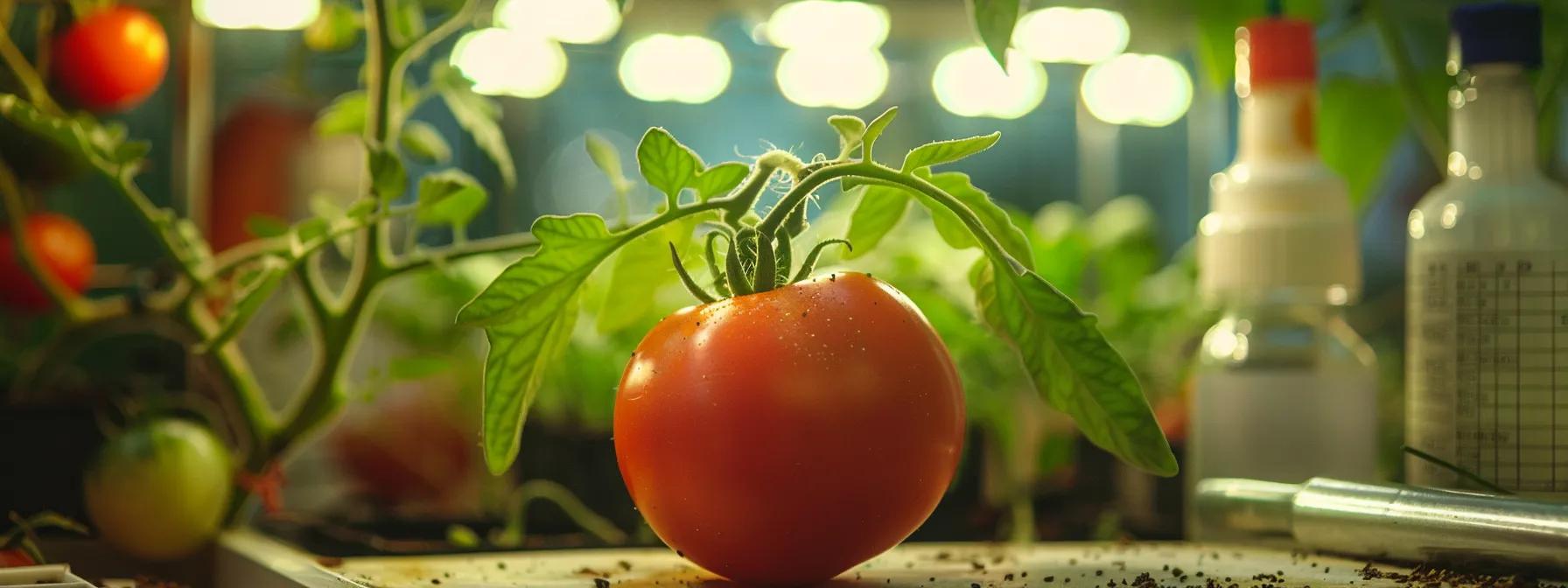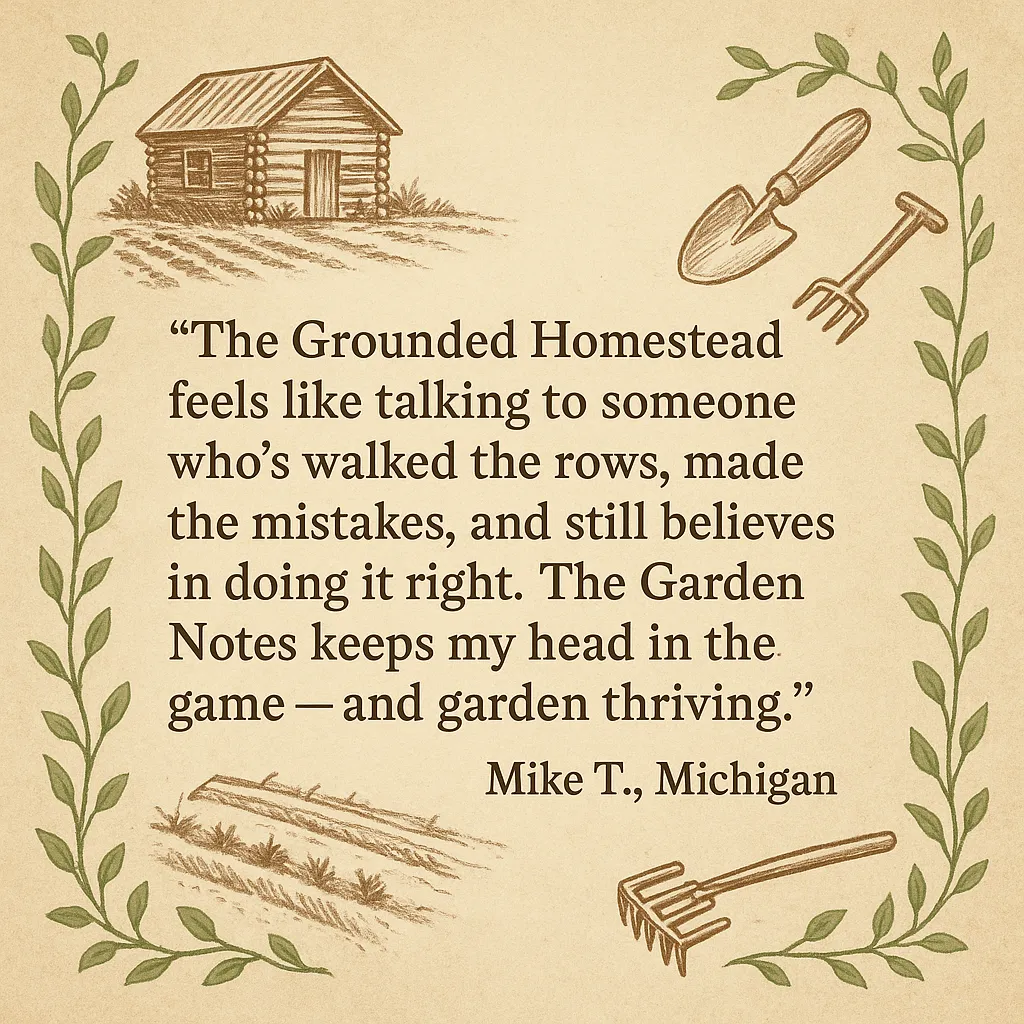
Tomatoes 101: How to Grow Strong, Productive Plants from Seed to Harvest
Tomatoes 101: How to Grow Strong, Productive Plants from Seed to Harvest
The summer I really learned how to grow tomatoes wasn’t the first one I planted them. It was the third—after two failed attempts, a few cracked fruits, and some heartbreaking blossom-end rot. I remember Grandma walking out barefoot in the dew one morning, picking up one of my stunted plants and saying, "It ain't the tomato's fault, honey. It's the way we set the table."
Turns out, tomatoes are picky. But they’re also generous if you treat them right. This guide is the one I wish I had when I was starting out. From seed to sauce, here’s everything I’ve learned about growing tomatoes that thrive.
1. Choose the Right Type for Your Garden (and Your Table)
Before you ever open a seed packet or pick up a plant at the nursery, you need to know what kind of tomato suits your goals and growing space.
Determinate vs. Indeterminate
Determinate tomatoes grow to a fixed size and set fruit all at once. Great for container growers or small raised beds. Ideal if you're planning a big canning day.
Indeterminate tomatoes keep growing and producing until frost. They need staking, pruning, and space—but you’ll get a longer harvest.
Tomato Types:
Slicers (e.g., Beefsteak, Brandywine): Meaty, perfect for sandwiches.
Paste (e.g., Roma, San Marzano): Less water, ideal for sauces and preserving.
Cherry/Grape (e.g., Sungold, Sweet 100): High yield, quick to mature, easy to snack on.
Match the Plant to Your Space:
If you’re gardening in a 2x4 raised bed or a five-gallon bucket, a cherry or determinate paste tomato is your best bet. Got more room and a tall trellis? Go for indeterminate heirlooms.
Quick Tip: If you only grow one tomato this year, grow a cherry variety. They're almost foolproof, and even the rough seasons usually produce a handful of sweet fruit.
2. Start Strong: From Seed to Healthy Start
If you're starting from seed, timing matters.
When to Start Indoors:
In Zones 5–7, count backward 6–8 weeks from your last frost date.
In Zones 8 and up, you can often direct sow or start 4–6 weeks before transplant.
Seed-Starting Essentials:
Use a quality seed-starting mix (not garden soil).
Provide strong, consistent light (grow lights are better than windows).
Keep temps 70–75°F for germination.
Avoiding Leggy Starts:
If your seedlings look like spaghetti—tall, thin, and floppy—they need more light and a slight breeze to build strength.
Buying Starts? Look for:
Dark green leaves (not yellow)
Sturdy stems
No flowers yet
Grandma Says: "Don’t fall for the biggest plant. Look for the one that looks like it still wants to grow."
3. Soil, Sun, and Support: Set Them Up for Success
Soil Needs:
Tomatoes are heavy feeders with deep roots. They love:
Rich, well-draining soil with plenty of compost
A slightly acidic pH (around 6.0–6.8)
Additions like worm castings, aged manure, crushed eggshells
Sunlight:
6–8 hours minimum. Tomatoes crave full sun. Morning light is best.
Support Systems:
Stake or cage your tomatoes early to avoid damaging roots later.
Stakes: Minimal footprint, ideal for pruning.
Cages: Easier but bulkier; choose heavy-duty ones.
Trellis: Great for indeterminates with vertical space.
Pruning & Suckering:
Remove suckers (those little shoots between main stem and branches) for better airflow and fruit size.
Prune lower leaves to prevent soil splash and disease.
4. Watering and Feeding: Get the Rhythm Right
Tomatoes love consistency. You can’t drench them and ghost them. Keep a rhythm.
Watering:
Deep water 2–3 times per week, more during heat waves
Drip irrigation + mulch = tomato magic
Avoid watering leaves to reduce fungal risk
Blossom-End Rot?
That sunken black spot is a calcium issue, often caused by erratic watering.
Feeding:
Mix compost into the planting hole
Use fish emulsion, compost tea, or balanced organic fertilizer
Avoid high-nitrogen products after flowering
Pro Tip: Too much fertilizer = lush leaves, no fruit. Less is more after fruit sets.
5. Companion Planting & Rotation Wisdom
Tomatoes don’t love everybody.
Best Companions:
Basil (boosts flavor + deters pests)
Marigold (repels nematodes)
Garlic + onions (natural pest control)
Bad Neighbors:
Potatoes (same diseases)
Corn (attracts tomato fruitworm)
Fennel (stunts growth)
Rotation Matters:
Avoid planting tomatoes where peppers, potatoes, or eggplants grew last year.
6. Pest Pressure and Common Problems (And What to Do About Them)
Tomatoes invite problems. Stay ahead.
Pests:
Tomato Hornworm: Handpick or use BT (natural spray)
Aphids: Blast with water or use neem oil
Whiteflies: Yellow sticky traps + companion planting
Diseases:
Early Blight: Mulch well, space plants, trim lower leaves
Blossom-End Rot: Water evenly, add calcium to soil
Cracked Fruit: Water consistently, harvest early during wet spells
Other Issues:
Poor fruit set = too much nitrogen or not enough pollination
Leggy starts = not enough light early on
Grandma’s Take: “Tomatoes like routine. You give 'em that, and they’ll give back.”
7. Harvesting and Ripening: Don’t Let It Go to Waste
When to Harvest:
Deep color, slight give when squeezed, and a gentle twist
Don’t wait for perfection—cracks and critters love ripe fruit
Ripen Indoors:
Pick early before storms
Leave on a sunny windowsill or in a paper bag with a banana
Too Many Green Tomatoes?
Make fried green tomatoes, chutney, or let them ripen in trays
8. Extend the Season (or Plant Twice)
Fall Tomatoes?
In Zones 6–8, you can often squeeze in a second round if you start seedlings mid-June and transplant by late July.
Row Covers or Tunnels:
Protect young plants or extend the season into fall with frost protection.
Succession Strategy:
Plant early (55-day) and mid-season (75-day) varieties to stagger harvest.
Closing: From Seed to Saucepan
Growing tomatoes takes more than just planting and praying. But when you get it right, there’s no better feeling than lining your pantry with sauce jars you grew from the ground up.
Whether you’re starting with a cherry tomato in a pot or mapping out a dozen heirlooms across your raised beds, I hope this guide gets you closer to a harvest that makes you proud.
"Build houses and settle in them; plant gardens and eat what they produce." — Jeremiah 29:5
Get the Goods: Be sure to download your Tomato Care & Harvest Planner — including a seed-start timeline, pruning diagram, crop rotation guide, troubleshooting chart, and harvest log.
Stay rooted,
The Grounded Homestead


Facebook
Instagram
X
Youtube